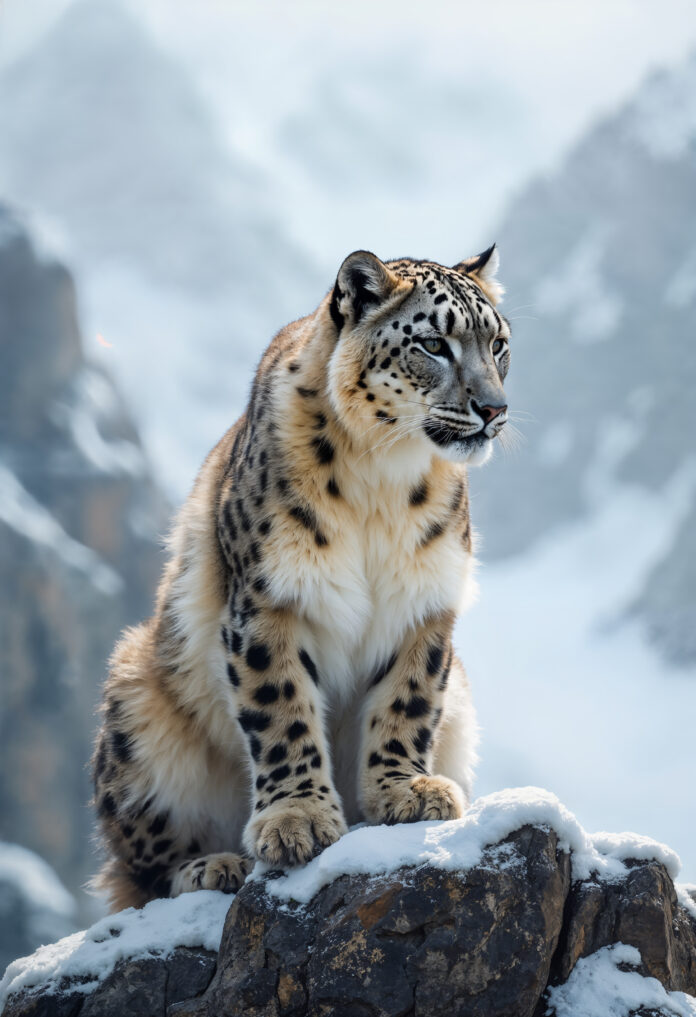Snow Leopard
Outline of the Article: “Snow Leopard”
H1: Introduction to the Snow Leopard
H2: What is a Snow Leopard?
The specific reason that snow leopards are so interesting forms the foundation of section H2.
H1: Habitat and Range
H2: Where Do Snow Leopards Live?
H3: Mountainous Regions and Their Adaptation
H3: Countries with Snow Leopard Populations
H1: Physical Characteristics
H2: Appearance and Size
The unique characteristics that distinguish Snow Leopards represent H2 while Unique Features that Set Them Apart constitutes H2 as well.
H3: Tail and Fur – Nature’s Cold Weather Gear
H1: Behavior and Lifestyle
H2: Are Snow Leopards Solitary?
H2: Hunting Habits and Diet
H3: Stealth and Power – The Silent Predator
H1: Reproduction and Lifespan
H2: Mating Season and Cubs
H3: Raising the Young
H1: Threats to the Snow Leopard
H2: Human Encroachment and Habitat Loss
H2: Climate Change
H2: Poaching and Illegal Trade
H1: Conservation Efforts
The current situation regarding snow leopard protection stands as the topic of H2.
H3: Conservation Organizations
H3: Government and Community Involvement
H1: FAQs
-
What does the snow leopard eat?
-
How many snow leopards are left in the wild?
-
Can snow leopards roar?
-
Why are snow leopards endangered?
-
How can I adopt a snow leopard symbolically?
- Naturalists know Snow Leopards as the Ghost of the Mountains.
Introduction to the Snow Leopard
The Statement involves ghost sightings in mountainous regions. The snow leopard stands as a mysterious creature which walks silently through dramatic mountain territories that exist among Earth’s severe high-altitude regions. The “ghost of the mountains” nickname suits this big cat which represents a necessary element of global biodiversity.What is a Snow Leopard?
Panthera uncia represents one of the largest wild cats residing within Central and South Asian regions. Scientists recognize the snow leopard as closer to a tiger than it is to the leopard category. Snow leopards remain rarely observable due to their shyness while being secret animals that keep to themselves.The Species Snow Leopards Attract Such Interest
Why the obsession? Their physical appearance shines unique in the world through their thick fur covered with gray-white rosettes as well as their piercing green or gray colored eyes and their remarkable thick fluffy tail. Freezing temperatures and brutal altitudes make up the most compelling part of their story beyond their attractive appearance.Habitat and Range
Where Do Snow Leopards Live?
Snow leopards establish their populations in extremely challenging environments that rise from 9,800 feet up to 17,000 feet above sea level. These mountainous cats occupy rocky cliffs together with alpine meadows while they also inhabit snow-covered slopes of high altitudes.Mountainous Regions and Their Adaptation
The Himalayas together with Tian Shan mountains serve as snow leopards’ habitat where their muscular features and wide paw structure allow them to explore snowy areas as if they were born to climb and walk on snow.Countries with Snow Leopard Populations
Snow leopards survive in a total of 12 nations including China together with India alongside Nepal and Mongolia and Russia together with Pakistan. The population of China makes up 60 percent of the total global count.Physical Characteristics
Appearance and Size
Snow leopards show a weight range from 60 to 120 pounds and male animals exceed the size of females. The animal resembles a large dog in size yet exhibits extraordinary strength together with superior agility.Main Characteristics that Make Snow Leopards One of a Kind
What makes them stand out? Their body comes with black rosettes in their smoky-grey fur and features short forelimbs together with long hind limbs used for leaps along with their signature fluffy tail.Tail and Fur – Nature’s Cold Weather Gear
Snow leopards use their extremely long tail as both a protective covering and stabilizing instrument during movements between ledges.Behavior and Lifestyle
Are Snow Leopards Solitary?
Absolutely. Snow leopard cats prefer remaining solo except to reproduce. Their territory extends across various areas yet they defend it by leaving scent marks for territorial boundaries.Hunting Habits and Diet
Their diet? Himalayan blue sheep combined with ibex form most of the mountain sheep and goat diet for this region. These solitary creatures respect prey few barriers since they seize any animal opportunity that passes their way including birds hares and domestic livestock.Stealth and Power – The Silent Predator
Snow leopards are ninja-like hunters. Snow leopards move through their territory with silent stealth before attacking their prey with exceptional force that enables them to jump more than 50 feet with one bound. - Reproduction and Lifespan
Mating Season and Cubs
Reproductive activities of leopards occur during the period between January and March. The period of fetal development lasts 90 to 100 days before one to five cubs emerge as tiny but resilient survivors.Raising the Young
Sibling cubs maintain their attachment to mother for 18 months during their development period. The life of a snow leopard cub represents a challenging period due to their natural ability to adapt.Threats to the Snow Leopard
Human Encroachment and Habitat Loss
The process of humans constructing roads along with their invasion into wilderness areas continues to decrease snow leopard habitats. The reduced prey population shares a direct correlation with an increased threat of attacks and encounters between predators and humans.Climate Change
The tree line expands because of growing temperatures and this contraction of alpine environments threatens species that live in these areas. The changing climate condition has adverse impacts on the availability of prey populations.Poaching and Illegal Trade
The protection status of snow leopards does not stop humans from killing them for their fur and bones together with other parts of the animal. Permanent damage to wildlife arises from illegal trade operations. - Conservation Efforts
Many organizations are involved in snow leopard protection initiatives.
People are now fighting the destruction through their combined scientific research and emotional dedication and collective strength.Conservation Organizations
The important protective tasks of Snow Leopard Trust alongside WWF and Panthera include tracking leopard movements with GPS devices while safeguarding environments and broadcasting information about these animals.Government and Community Involvement
Local communities are key. The conservation program detects poachers while minimizing conflicts between local people and wildlife because it includes herders and villagers.Snow Leopards play a significant role in both contemporary culture and historical mythologies
Symbolism in Local Traditions
The cultural mythology of Central Asia associates snow leopards with power as well as fearless nature and independence. The people of Tibet along with Mongolian communities hold snow leopards in high respect through their cultural traditions.Representations in Art and Media
Traditional art pieces and contemporary BBC documentaries featuring snow leopards serve to invoke amazed admiration through their presentations.Why Saving the Snow Leopard Matters
Role in the Ecosystem
Snow leopards are apex predators. The populations of mountain herbivores stay healthy because snow leopards help preserve this balance which sustains the ecosystem.Indicator of Mountain Health
The mountain doctors maintain balance in the high-altitude environment. The living condition of every element in snow leopards’ habitat improves while they prosper within their environment.How You Can Help
Support Conservation Programs
You can help snow leopard conservation by giving donations to certified wildlife nonprofits and backing snow leopard sustainable goods and purchasing symbolic snow leopard adoption programs.Eco-Tourism and Education
Tour the region by supporting local conservation programs that operate safe operations. Knowledge about snow leopards empowers more people to develop active interest toward their protection.Conclusion
The snow leopard embodies three key values because it represents natural wildness and demonstrates ecological resilience along with structural balance in all ecosystems. But it’s also in danger. Protecting these rare animals represents the defense of specific species but most importantly maintains the delicate biosystems found in our Earth’s fabulous locations. We should take immediate action to prevent the disappearance of snow leopards throughout the mountains forever.FAQs
1. What does the snow leopard eat?
Snow leopards mostly prey on mountain goats and sheep, but they’ll also eat smaller animals like marmots, hares, and birds when necessary.2. How many snow leopards are left in the wild?
Estimates suggest there are between 3,500 and 6,500 snow leopards left in the wild. Exact numbers are hard to determine due to their elusive nature.3. Can snow leopards roar?
Nope! Unlike other big cats, snow leopards cannot roar. They purr, hiss, and make a unique “chuffing” sound instead.4. Why are snow leopards endangered?
They’re threatened by habitat loss, poaching, retaliation killings, and climate change. All of these factors put pressure on their survival.5. How can I adopt a snow leopard symbolically?
Many conservation groups offer symbolic adoption kits. You donate, and in return, you get updates, photos, and sometimes a plush toy representing your adopted cat.
Please don’t forget to leave a review.

